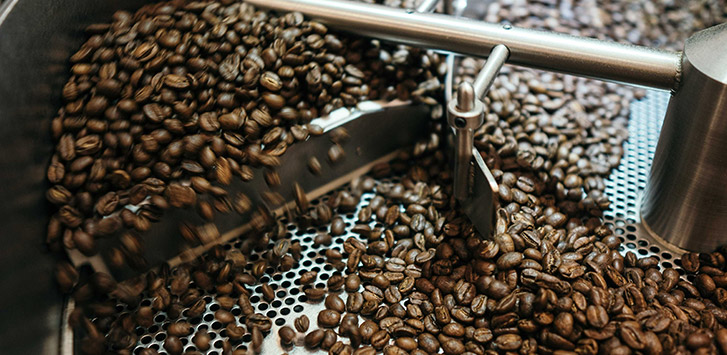When exploring how to roast coffee, there is a lot to pay attention to. So, we are taking the hassle away and giving you a step by step guide to roasting new coffee beans.
.jpg)
Step 1. Choose Your Unroasted Coffee Beans
To begin the process, you need to choose your unroasted coffee beans. Unroasted beans have so much potential to be an intricately unique roast. But you have to understand exactly what your specific choices can offer you.
If you understand the different elements that affect the flavor, you can precisely pick your favorite. Keep in mind some factors such as the origin, the environment it was grown in, how it was processed, and so on.
Once you know what your ideal flavor profile is, you've mastered the first step in roasting coffee.
Step 2. Decide What Roast Profile You Want
There are many factors that impact the roast level. The easiest way to identify the roast level - from light to dark roasts - is the deepening color of the beans.
Light Roasts tend to be light brown in appearance. They are more matte with no oils on the surface of the bean. Usually, you can taste fruitier notes. The flavors tend to be a bit more muted with stronger acidity.
Medium Roasts lean more medium brown and are don't have oil on the surface of the bean. The flavor profile is a bit stronger and less acidic than light roasts.
Medium Dark Roast is darker bodied than a plain medium roast but not quite as dark as a full dark roast. This perfect in between looks a shade deeper of medium brown and begins to exhibit some of the oils from the beans. The taste is usually fuller and balances the bean’s characteristics quite well. This tends to be the roast that provides the most flavor from the bean.
Dark Roast has the darkest brown shade of bean, which can sometimes almost appear black. The oils of these beans are very prevalent. The flavors lean more smoky and bitter than acidic.
Step 3. Map Out Your Roast
After you decide on the perfect beans and the flavor profile, you have to make a plan on how to best approach your roast. You'll need to consider the temperature, development time, rate of rise, and other similar aspects.
Different types of beans have different densities and moisture levels. Because of this, it is important to plan ahead. This will help you avoid any defects during roasting.

Step 4. Start Roasting
Once you have a plan you can start your roasting process! Keeping in mind what type of roaster is being used, you should set up by preheating your machine. Once reaching the desired temperature, place your beans in the roaster and pay close attention.
The first crack will indicate that your beans have reached a light roast. This is noticeable with a popping sound similar to the first pop of a popcorn. Allowing your beans to roast beyond this lets the sugars caramelize and the roast to deepen.
The second crack is an indication your beans have reached a medium roast and may not sound as prominent as the first.
Make sure to let your beans cool down right after roasting to prevent them from burning.
.jpg)
Step 5. Cup Your Coffee
Once you’ve developed your roast, you should cup it to see if you achieved your desired results.
Here's a quick cupping lesson if you've never cupped coffee before. You'll start by grinding the beans and then pouring water over them. Give yourself a second to admire and identify the aroma.
Wait for four minutes before you take out the coffee grounds that floated to the top of your coffee. Break the crust and remove the foam before you taste it. Then, slurp the coffee from your spoon and observe all the flavors to their fullest.
Step 6. Draw Your Conclusions and Keep Experimenting!
After making your coffee, you can decide if you like the taste or want to make adjustments for the next time.
There will be distinct flavors based on the beans you chose and which roast you went for. You may not identify all of them while cupping, but practice makes perfect! Keep these observations thorough, and you should know exactly what you want to try the next time you roast.
Conclusion
Roasting coffee that caters exactly to your planned flavor profile requires knowledge and experience. These steps should help make the process a little easier when you are going to make your next batch.